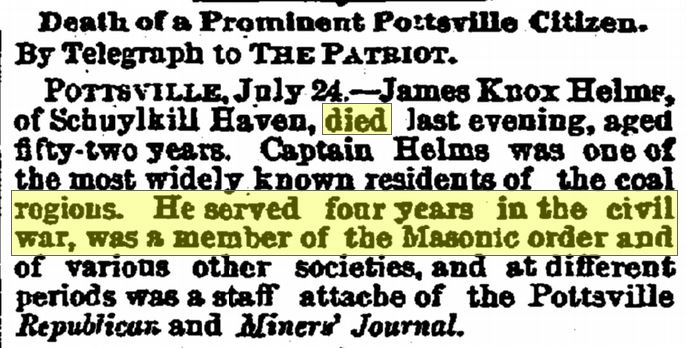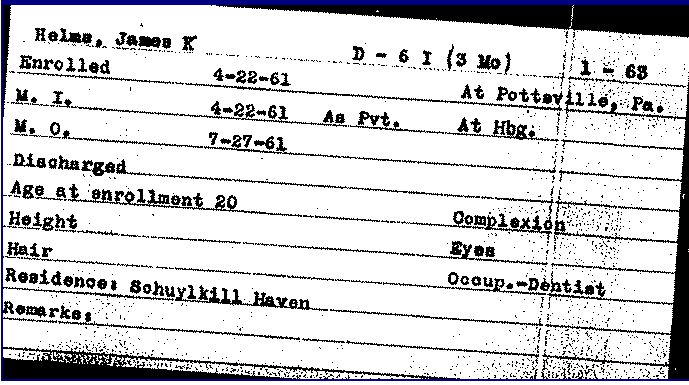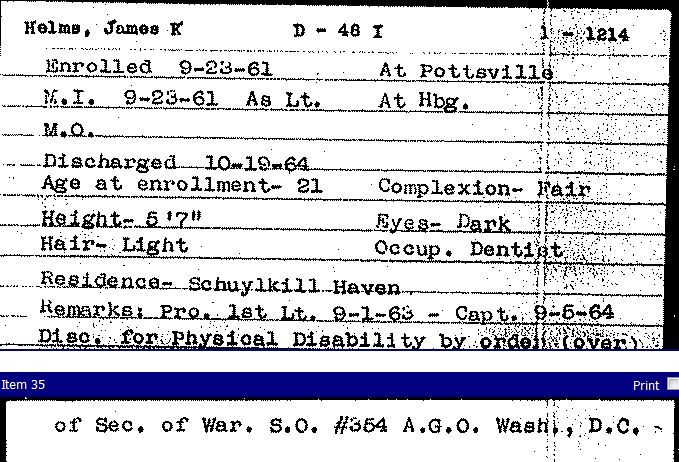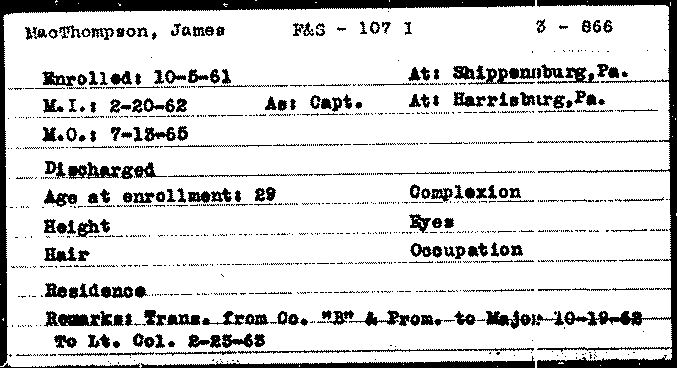Capt. James K. Helms of Schuylkill Haven & Pottsville
Posted By Norman Gasbarro on March 6, 2015
The obituary of James K. Helms appeared in the Harrisburg Patriot on 25 July 1893:
Death of a Prominent Pottsville Citizen.
By Telegraph to THE PATRIOT.
POTTSVILLE, Pennsylvania, 24 July 1893 — James Knox Helms, of Schuylkill Haven, died last evening, aged fifty-two years. Captain Helms was one of the most widely known residents of the coal regions. He served four years in the Civil War, was a member of the Masonic order and of various other societies and at different periods was a staff attache of the Pottsville Republican and Miners’ Journal.
The Pension Index Card for James K. Helms notes that the served in Company D of the 48th Pennsylvania Infantry. He first applied for a pension on 1 December 1864, before the war was over. The pension was received and he collected it until his death. After his death, his widow Amanda [Kantner] Helms applied on 5 August 1893, and she too received a pension which she collected until her death on 23 March 1928. Both James K. Helms and Amanda are buried at the Schuylkill Haven Union Cemetery, Schuylkill County.
According to information in Bates, James K. Helms first served in the 6th Pennsylvania Infantry, Company D, as a Private, from 22 April 1861 through his 3-month term of enlistment to 27 July 1861. At the time of his enrollment, he gave his age as 20, his occupation as dentist, and his residence as Schuylkill Haven.
For his 2nd enlistment, James K. Helms enrolled at Pottsville on 23 September 1861. At the time, he said he was 21 years old, his occupation was dentist, and his residence was Schuylkill Haven. He stood 5 foot, 7 inches tall, had fair complexion, dark eyes and light hair. The Bates record indicates that he was discharged for physical disability on 19 October 1864 by Special Order #354 of the Secretary of War.
James K. Helms was the brother of Jere K. Helms who was killed at Antietam. The G.A.R. Post in Schuylkill Haven is named after Jere K. Helms.
For a more complete biographical sketch of Captain James K. Helms, see Soldiers of the 48th: Captain James K. Helms, Co. D, on the 48th Pennsylvania Blogspot by John David Hoptak.
Note: The obituary gives James Helms‘ middle name as Knox, but the grave marker at Schuylkill Haven Union Cemetery gives his middle name as Kellerson.
——————————
The obituary is from the on-line resources of the Free Library of Philadelphia. The Pennsylvania Veterans’ Cards are from the Pennsylvania Archives. The Pension Index Card is from Ancestry.com.
 ;
;















